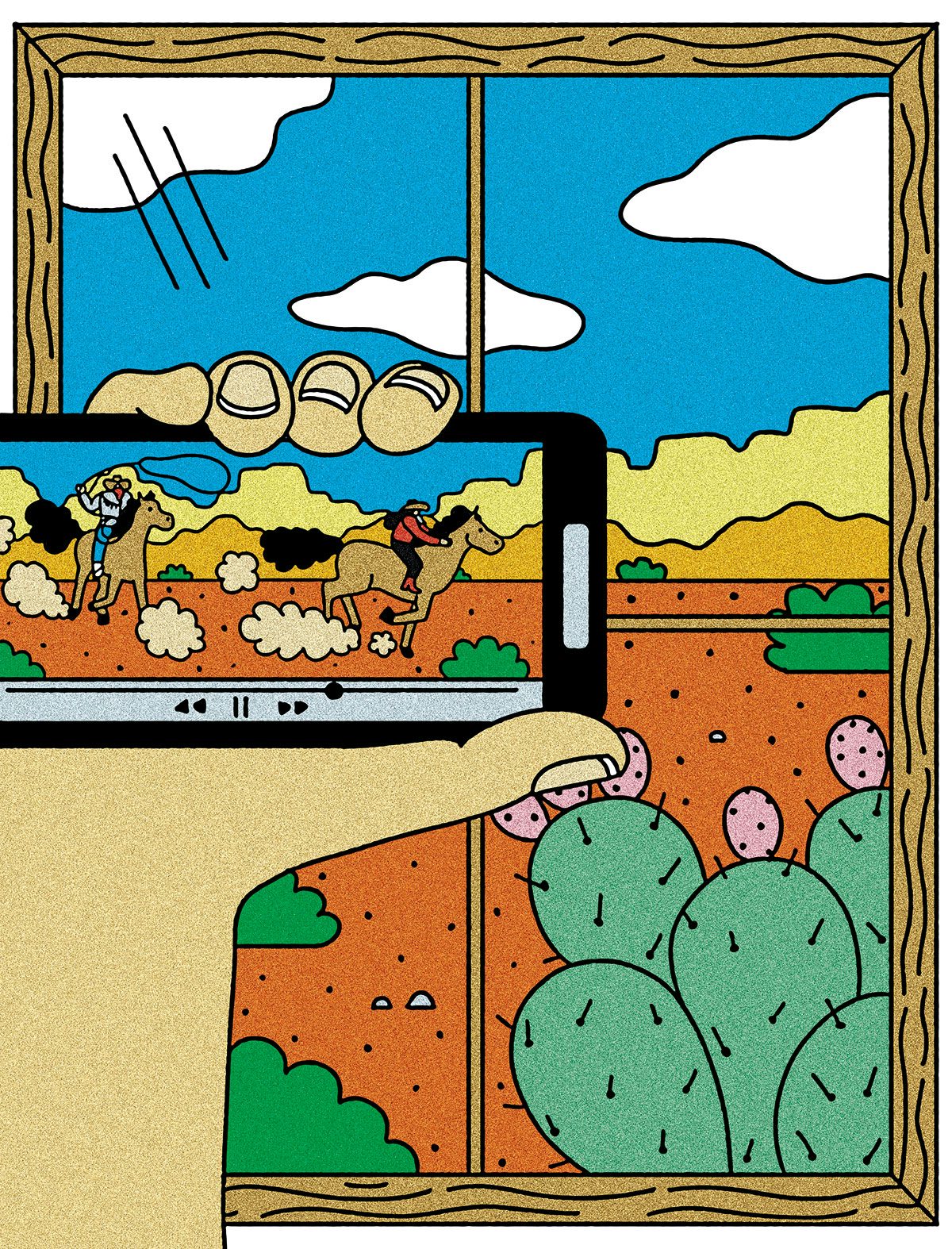Montreal-based illustrator Melanie Lambrick fell into an illustration career accidentally, so much so that she’d never even considered it an option. “I have a double major in art and political science, and I always had a lot of overt messaging in the artwork I made in school but at that time I was doing a lot of painting and photography. Then I did a Masters in Urban Planning and worked in that field for a while but something didn’t feel right – I knew I wanted to be more creative,” says Lambrick. “I actually started studying journalism and it was there that I started really looking at illustration and realising it might be a good fit for me.”
Though she studied fine art in her undergraduate degree, Lambrick is self-taught and she had little exposure to the industry before she started. “Being self-taught is great in some ways – I feel like my approach is really unique and personal to me. It is a big learning curve however, and I think my style has evolved and grown very publicly, which is very vulnerable,” explains Lambrick. “It would have been nice to experiment and explore in a lower-stakes school environment with more mentoring and feedback. I’ve had to learn how to trust my work and also how to go outside myself to learn regularly.”

With this self-awareness, Lambrick can easily cite her influences. “I think my style is fun, bright and contemporary, but it definitely pays homage to the West Coast/California vibe in the 60s and 70s and to vintage children’s book illustration,” she explains. “Even though I work mostly digitally, I try to ensure that my work gets as close to an analogue approach and look as possible. It’s so nice to see an artist’s hand and tools in their work.”
Lambrick mostly uses Photoshop and draws on her Wacom tablet for speed. “I love analogue work but I can’t produce it quickly enough,” she says. “I try to find or create Photoshop tools that mimic pen and ink, screenprint, and other more hands-on techniques methods to keep a more crafted feeling.”


The illustrator has applied this technique to many editorial commissions, which have seen her create work for the New York Times, the Washington Post, the Atlantic, Reader’s Digest, Medium and Man Repeller among others. “I love editorial work because it’s very challenging. The ideas are incredibly complex and the deadlines are very short,” says Lambrick. “It’s great to use both sides of my brain to make an assignment very smart and conceptual, as well as creatively interesting and beautiful.”
A lot of Lambrick’s editorial work is conceptual but her punchy colour palette and uncomplicated figures and shapes grounds her work in a kaleidoscopic reality that feels both nostalgic and trippy. “Editorial clients are usually wonderful because they are both very intelligent and very well-versed in art, illustration and design. They tend to give me lots of creative space and when they do give input, it is often really valuable and helps me grow my practice,” notes Lambrick. “I love briefs that have multiple parts where I can explore a topic from different angles and viewpoints. I also love briefs where clients are open to a brighter and perhaps funnier take on the topic, even if it is serious.”

With the short deadlines that come with editorial illustrations, Lambrick has honed a smooth working process. “I read the material and the brief and make sure that I understand the subject matter very well. Sometimes I have to do further research. Then, if I have time, I try to do some free-association research by looking at imagery, photographs, art, textiles, ephemera that I might connect with the topic, even if it is just tangentially,” Lambrick explains.
“From there, I sketch out a bunch of thumbnails of ideas that could work. Then I try to take a break and let the whole thing simmer in the back of my brain, if I can. I come back and choose the best ideas from the thumbnail sketches and develop them into full sketches that I send out to the client. After their selection and any back-and-forth that is needed, I move on to the final piece. Sometimes this whole process happens in the same day.”

Though Lambrick likes the fast pace, getting to grips with topics she knows nothing about can be one of the most challenging aspects of editorial commissions. “In those cases I really have to double-down and find a way to communicate what needs to be communicated while also including my own references and interests somehow,” says the illustrator.
Her ability to adapt has also meant Lambrick has been able to handle the changing nature of illustration work, though it doesn’t make it any less hard. “Freelance illustration has an inherently difficult-to-predict workflow. Over the past few years I find myself going through hugely busy times and almost burning out, then not receiving any work for a week or more, which feels nerve-wracking,” she explains. “I was just starting to develop a more stable work schedule but I suspect that will be out the window as the economy and industry continue to adapt to the pandemic. It has always felt like the future is hard for me to predict with this work and that is even more so the case right now.”

Despite the difficulties in beginning and maintaining a career in illustration, Lambrick’s advice to people who want to start is simple: “Just start! Your work will only get better if you keep doing it.”
The illustrator also feels having a strong individual voice is vital. “So pull in as many of your own influences and interests as you can when developing your style,” she says. “I think that is the key to making the process continually interesting for viewers, but also for the artist themselves.”

The post Melanie Lambrick weaves nostalgia into her West Coast-inspired images appeared first on Creative Review.
from Creative Review https://ift.tt/2XoakGX

No comments:
Post a Comment